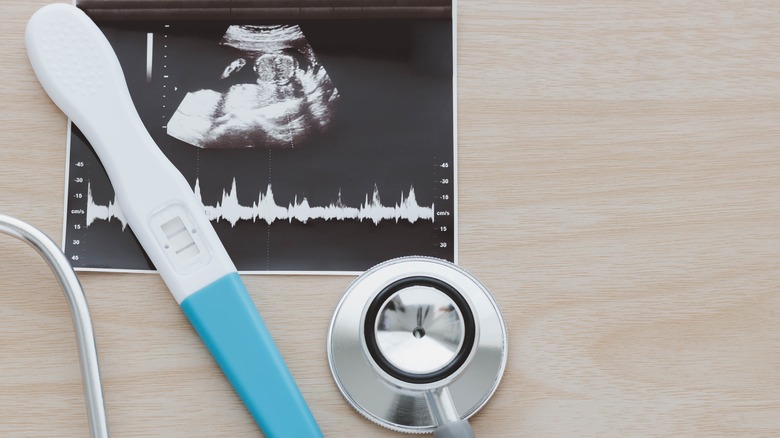What Did Wheat And Barley Have To Do With Ancient Egyptian Pregnancies?
Egyptians living 3,500 years ago used grain products for an intriguing test, according to Smithsonian Magazine. Throughout all of history, civilizations have had health tests and cures. Some worked, some didn't. Long ago, ancient Egyptians figured out lots of medical information without the benefit of advanced technology, according to World History. They used honey and herbs on people with toothaches, practiced aromatherapy, and attempted to cure diseases by exorcising a ghost from a sick person. But one test they created was actually pretty useful: They established one of the oldest pregnancy tests known to humankind.
According to an article from the National Library of Medicine, "On an Ancient Egyptian Method of Diagnosing Pregnancy and Determining Foetal Sex," the test went like this: If someone thought they were pregnant, they would gather two bags, one full of barley seeds, and the other of wheat or buckwheat seeds. They would then pee in each bag once per day, and wait for the results.
The test was thought to reveal the baby's sex
If either grain bag started growing sprouts, the person could assume they were pregnant (via "On an Ancient Egyptian Method of Diagnosing Pregnancy and Determining Foetal Sex"). If their urine didn't jumpstart either plant's growth, they probably weren't pregnant.
That's not the only thing the test could reveal. Apparently, the test could also tell the prospective parent the sex of their baby, according to How Stuff Works. If the wheat grew first, it would be a baby girl. If the barley grew first, the new parent could expect a baby boy.
So, was this ancient Egyptian pregnancy test actually accurate? Harvard University reports that it's a mixed bag. When it was tested in modern times, the peeing-on-grains test was accurate between 70% to 85% of the time. The wheat and barley method to determine a pregnancy worked so well that people used it well into the 1690s (per Smithsonian Magazine).
Modern day pregnancy tests are really similar
Even if the test could predict pregnancy pretty well, it wasn't perfect, according to Smithsonian Magazine. This test wasn't at all accurate when it came to predicting the sex of the baby.
The reason the ancient Egyptian test worked so well was that pregnant folks have higher estrogen levels in their urine than a person who isn't pregnant. These extra hormones may have caused the seeds to sprout way faster than they would have with just water.
Today's modern pregnancy tests are much more accurate, with a 99% accuracy rate for the at-home urine-testing sticks (per Harvard University). The modern and ancient tests both relied on the same scientific reasoning. We now know that a good pregnancy indicator can detect hormones that only occur during pregnancy, and modern humans just have to wait for the little blue lines on the test to show up. It's the same basic principle as what the Egyptians were doing, but with 100% fewer grain products.


